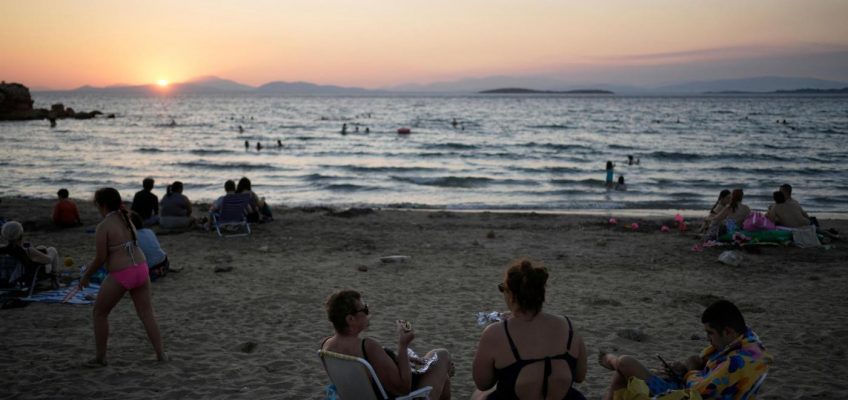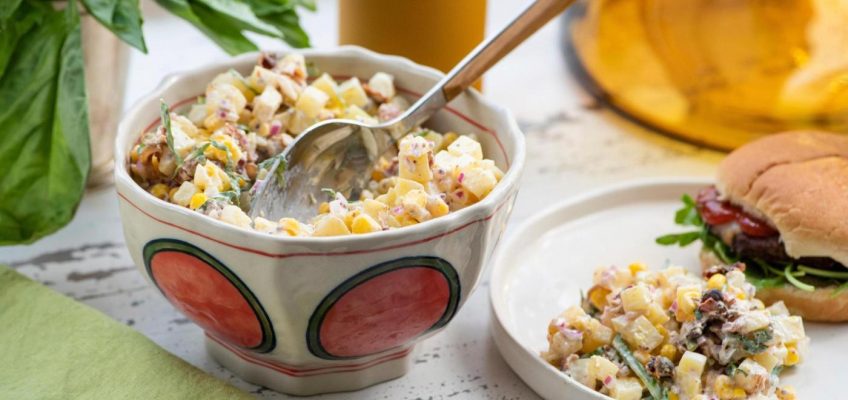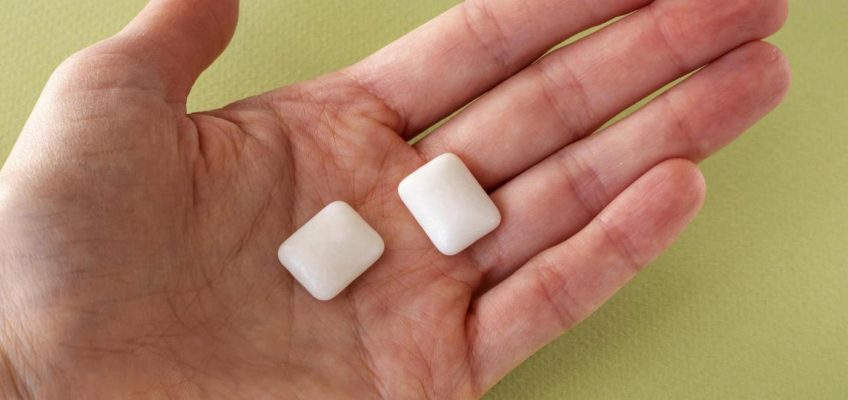By Arthur Allen, KFF Health News
Don’t get Nathan Jones started on xylitol, the active ingredient in his chewing gum, nasal spray, and other products. He’ll talk your ear off about its wondrous powers against tooth decay, as well as its potential to fight COVID, heart disease, Alzheimer’s — you name it.
Two deaths among 20 Minnesota cases of West Nile virus this year
The national suicide hotline for LGBTQ+ youth went dead. States are scrambling to help
Health care groups aim to counter growing ‘national scandal’ of elder homelessness
Doctors want women to know the nuanced reality of hormone therapy for menopause
Kennedy’s anti-vaccine strategy risks forcing shots off market, manufacturers warn
For now, Jones, the founder of Xlear, can’t make those claims in his company’s advertising. But if the lawsuit his company brought against the Federal Trade Commission succeeds, he’ll likely be able to say anything he wants.
As the Trump administration loosens enforcement by the Federal Trade Commission, Department of Justice, and FDA of unproven health claims, Jones and his allies in the “medical freedom” movement are pushing to permanently roll back the health regulatory state.
For decades, the FTC has required companies to back any medical claims about their products with substantial evidence, while taking actions against hundreds of “bogus health cures,” said Jessica Rich, the FTC’s director of consumer protection from 2013 to 2017.
If successful, the lawsuit by Jones’ company “would be a complete game changer,” said Mary Engle, associate director of the FTC’s advertising practices division from 2001 to 2020.
The FTC — and FDA — don’t have sufficient staffing to rigorously police health claims, but Health and Human Services Secretary Robert F. Kennedy Jr.’s allies in the alternative medicine world have suggested that the agencies already go too far.
“The pharmaceutical industry has a stranglehold and monopoly in America,” Jones told KFF Health News. “The consumer should have a choice in what they’re doing and how they’re being proactive and reactive in their health care.”
Jones and other members of the Alliance for Natural Health USA, which includes alternative medicine practitioners, vaccine skeptics, and proponents of “natural” remedies, were elated when Kennedy became Health and Human Services secretary in February. One called it a “once-in-a-lifetime opportunity.”
Kennedy had warned shortly before Trump’s reelection that the FDA would face a reckoning for its “aggressive suppression” of vitamins, peptides, nutraceuticals, and other products from a supplement industry that has sought more freedom to make claims about its products.
Losing Regulatory Bite?
For decades, the FDA has had the power to recall dangerous products and check health claims, although it has nowhere near the workforce it would need to police the vast $70 billion supplement industry.
The FTC has traditionally had more teeth, successfully suing companies that make unsubstantiated claims. For example, the agency won a judgment last year against a company that advertised a supplement as “clinically shown” to improve memory.
The FTC under Trump has not announced any new enforcement actions against supplement makers (it did send consumers the proceeds of previous fraud settlements ), and the administration has reversed several COVID-related FTC actions. In March, the FTC dropped a lawsuit filed in 2021 against Jones and Xlear over the marketing of its “drug-free” sinus rinse as a COVID preventive and treatment. The Department of Justice also closed a case brought on behalf of the FTC and the FDA against a company that claimed its Earth Tea could cure COVID.
In June, Jones, who says he spent $3 million fighting the FTC suit before it was dropped, sued back. The company asked a judge to forbid the FTC from requiring that health product marketers back their claims with convincing evidence, such as clinical trials — a position the FTC has maintained since 1984.
Xlear hopes the suit will be considered under last year’s Supreme Court ruling known as Loper Bright, said Xlear attorney Rob Housman. That ruling gave courts more power to second-guess federal agencies’ interpretation of the laws that govern their activities.
The Alliance for Natural Health joined Xlear in a separate petition in May demanding that the FTC drop its requirement for companies to provide substantial evidence backing health claims, and to withdraw 2022 guidelines that generally require companies to run a randomized clinical trial to prove their claims.
The petition was filed by Jonathan Emord, a lawyer who has successfully fought FDA and FTC regulation of supplements and unsuccessfully ran for governor of Virginia as a Republican in the 2024 primary.
Emord’s petition seeks to flip the burden of proof. Instead of requiring the makers of supplements and cosmetic creams, pills, sprays, and herbals to prove their products do what they claim to do, the government would have to prove that they don’t.
“If an advertiser throws caution to the wind and makes a health-related product claim without resort to any supporting evidence, the FTC is powerless” to stop it, Emord wrote in the petition. “Rather, the claim will be tested in the idea and information market free of government constraint.”
Emord and the Alliance for Natural Health did not respond to repeated requests for comment.
The FTC would not comment on the lawsuit, the petition, or the issue of substantiation in general, spokesperson Juliana Gruenwald Henderson said.
Shorthanded and Mostly Hands-Off
Meanwhile, with Kennedy’s administration chockablock with proponents of nontraditional health products, “there’s been a downtick of enforcement,” Housman said.
Since Trump took office, the FTC has lost at least a quarter of the staff in its Division of Advertising Practices, which took the original action against Xlear, said Serena Viswanathan, who retired as FTC associate director in June. The Department of Justice has reorganized its consumer protection unit, which backed the FTC in many actions, and moved some of its lawyers to immigration and other areas.
In one of the only actions it has taken against deceptive health practices under Trump, the FTC hosted a July 9 workshop titled “The Dangers of ‘Gender-Affirming Care’ for Minors.”
In FTC Chairman Andrew Ferguson’s opening statement at that event, he excoriated the Biden administration for allowing hormonal and surgical treatments for youth experiencing gender dysphoria.
But Ferguson justified the FTC’s new attack on these treatments by referring to the agency’s traditional practice of pursuing companies for making false and deceptive claims. Noting the agency’s past actions against “shyster snake oil salesmen” promoting fake cures, Ferguson highlighted the Biden-era FTC’s position that “health claims need to be backed up by reliable scientific evidence” and an “incredibly high standard of scientific ‘substantiation.’”
Under that logic, Ferguson “has to defend against the Xlear lawsuit,” Rich said.
“If anyone can just hawk health products without any basis, and customers spend money on bogus cures instead of seeking proper care, it’s really a serious issue,” she said.
‘Nanny State’ or Not?
Ferguson’s remarks reflect one of many contradictions in the administration’s approach to health policy. While favoring deregulation and greater personal liberty to consume unregulated supplements, Kennedy has also pushed for stricter FDA oversight of food and drugs, while advocating for behavioral change that GOP officials derided as “nanny state” tactics when Democrats like former first lady Michelle Obama promoted doing so.
Kennedy, for example, has said he wants more randomized control trials for vaccines and drugs — a requirement rejected by medical freedom advocates like Jones.
“I like clinical data; I think it’s great,” Housman said. “It’s not the be-all and end-all.”
Kennedy has also announced plans to change a policy that allows food companies to add ingredients without a full safety review. But many supplement makers use the policy to get their products on the market without FDA review, and some are unhappy about the potential clampdown.
Banking on Xylitol
The FDA approved xylitol as a food additive in 1963 and regulates it as a cosmetic ingredient. Jones, who said his company has about 110 employees and sells to 70,000 retailers, founded Xlear 25 years ago.
Jones expresses skepticism of vaccines, believes the drug industry has a monopolistic stranglehold on health care, and is a “true believer” in xylitol, Housman said.
In an interview with KFF Health News, Jones said that the slightly sweet, minty-flavored substance reduces gum inflammation by blocking the adhesion of tooth-rotting Streptococcus mutans bacteria to cells in the mouth.
In Finland, where water is not fluoridated, dentists have long recommended xylitol-imbued chewing gum for children. In addition to fighting cavities and lowering periodontal disease, Jones said, xylitol could fight chronic illnesses like obesity, Alzheimer’s, and heart disease, which “all have a correlation with oral hygiene.”
But “the government bans us from going out and talking about what xylitol does,” he said. “We cannot say xylitol can help prevent tooth decay, because xylitol is not a drug, and that’s a drug claim.”
As for its use against COVID, three ear, nose, and throat specialists interviewed by KFF Health News said that xylitol is good for moisturizing nasal cavities, perhaps a bit better than simple saline solution. While there’s no evidence it prevents or cures COVID, xylitol, like saline nose washes, may reduce symptoms when used toward the start of any viral upper respiratory infection, said Christine Franzese, a professor of otolaryngology at the University of Missouri Medical Center and the chair of the American Academy of Otolaryngology-Head and Neck Surgery’s allergy, asthma, and immunology committee.
Xylitol is poisonous to dogs, but deemed safe to humans when used at recommended doses in sprays, candies, chewing gum, and other products, according to the American Academy of Pediatric Dentistry, which also states that evidence is mixed on whether xylitol fights cavities effectively.
At higher doses, xylitol can cause diarrhea and other gastrointestinal problems, and a study funded by the National Institutes of Health and published last year found that regular use of xylitol as a sweetener could exacerbate heart disease. The quantities of xylitol consumed daily by participants in that study were far higher than what’s in a few sticks of chewing gum, however.
Whether his lawsuit succeeds or not, Jones can probably expect a rosy business future.
On May 21, he and pediatric dentist Mark Cannon of Northwestern University were called to testify in the Utah Legislature in support of a pilot project to provide Xlear’s gum to students and prisoners in the state as a replacement for fluoridated water, which the state banned in March.
Florida ordered fluoride removed from the state’s water starting July 1, and other states are considering bans. Kennedy wants to end fluoridation nationwide, despite widespread skepticism of his belief that it poisons the brain at common dosing levels.
The bans are a boon to Xlear, Jones said. The company would provide gum for the Utah pilot at cost, he said, but if governments promote it and people learn more, “that’s where we see us being able to grow.”
©2025 KFF Health News. Distributed by Tribune Content Agency, LLC.




